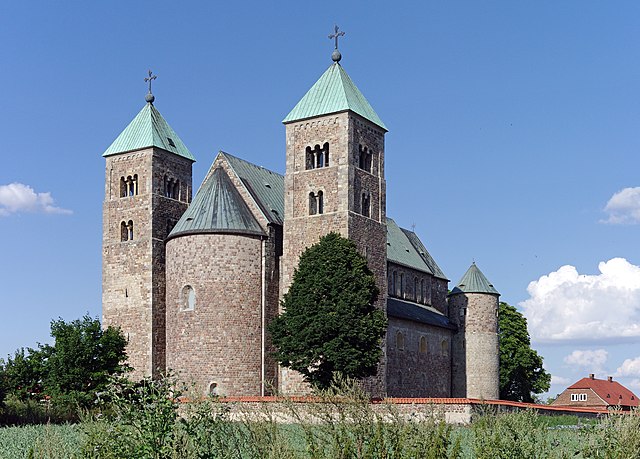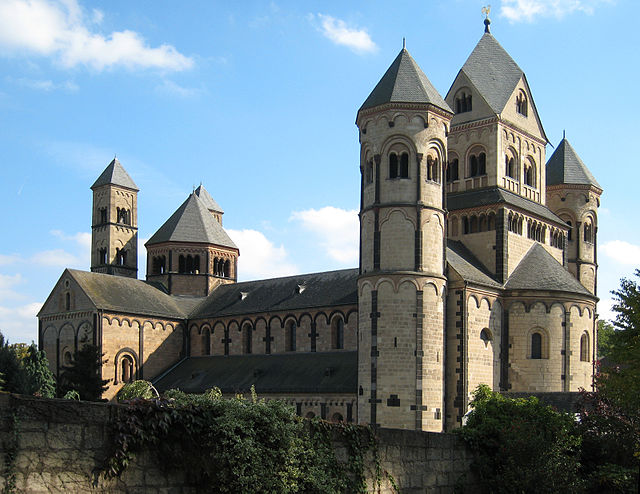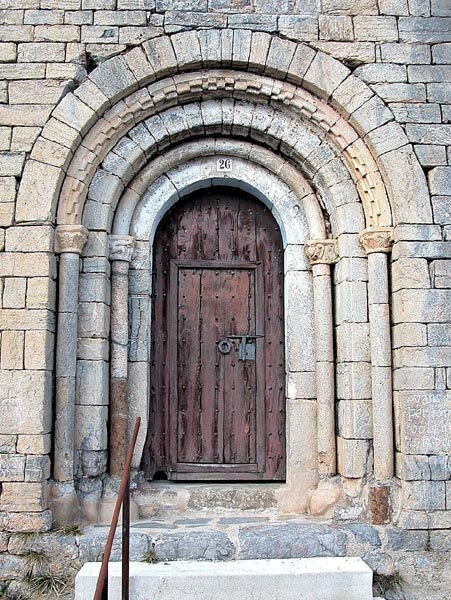One of the first streams of Romanesque architecture in Europe from the 10th century and the beginning of 11th century is called First Romanesque or Lombard Romanesque. It took place in the region of Lombardy and spread into Catalonia and into the south of France. Its principal decoration for the exterior, bands of ornamental blind arches are called Lombard bands. It was characterized by thick walls and lack of sculpture in facades, and with interiors profusely painted with frescoes.
Basilica of Sant'Ambrogio in Milan, Lombardy, brick architecture from the 6th to the 12th centuries
Bell tower of the abbey of Fruttuaria, 11th century, near Ivrea, Piedmont
Saint Clement of Taüll in Catalonia, Spain.
Basilica dei Santi Pietro e Paolo in Agliate, Lombardy near Monza built in 875, considered to be the first church of Lombard Romanesque
Romanesque architecture is an architectural style of medieval Europe that was predominant in the 11th and 12th centuries. The style eventually developed into the Gothic style with the shape of the arches providing a simple distinction: the Romanesque is characterized by semicircular arches, while the Gothic is marked by the pointed arches. The Romanesque emerged nearly simultaneously in multiple countries ; its examples can be found across the continent, making it the first pan-European architectural style since Imperial Roman architecture. Similarly to Gothic, the name of the style was transferred onto the contemporary Romanesque art.
Image: Lessay Abbaye 3
Image: Collegiate Church in Tum
Image: Maria Lach 02
Portal, Church of Santa Maria, Viu de Llevata, Catalonia, Spain








